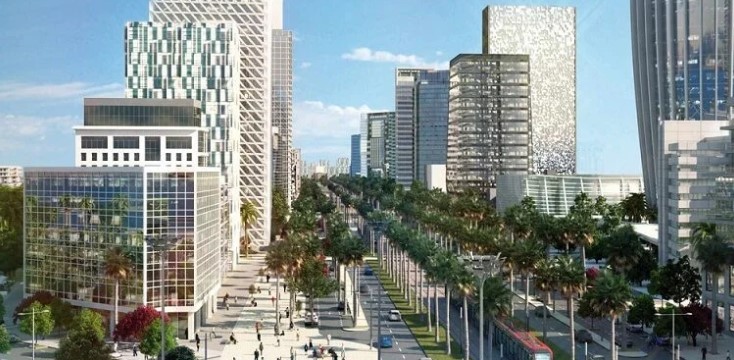In Casablanca, the daily commute is beginning to look like a glimpse into the future. According to FIFA data, Morocco’s economic capital tops the national rankings for transportation among the host cities of the 2030 World Cup, scoring an impressive 4.7 out of 5. This recognition highlights a transport network that’s not only vast and efficient but also constantly evolving—part of a broader sustainable development strategy driven by King Mohammed VI.
Casa Voyageurs Station stands as a symbol of this transformation. From early morning, its striking architecture draws the eye: a golden wooden sphere adorned with welcoming messages in various African languages greets travelers. The station, upgraded as part of the country’s high-speed rail initiative, has become much more than a transit hub. It now offers shops, digital services, and gathering spaces, turning it into a lively, multifunctional center of urban life.
The high-speed Al Boraq train connects Casablanca with Tangier in a journey that’s fast, direct, and comfortable. Business travelers often use the opportunity to explore other cities between meetings. This ease of movement, combined with a wide range of services, has turned the station into a vital artery of the city’s daily rhythm.
Elsewhere in the city, the tram system extends the network’s reach. Onboard, you’ll find both locals and tourists heading to beaches, parks, or historic souks. A rechargeable, long-term transit card simplifies access and smooths out the commute. As trams glide through Casablanca, passengers pass by Casa Art’Way stations—urban art galleries that bring creativity into public spaces and lend character to each stop.
Farther south, in the district of Sidi Maarouf, a multi-level interchange connects key routes across the city. This strategic junction provides easy access to major business districts like Casa City Finance and Casa Nearshore. It complements the city’s tram and bus rapid transit systems, collectively forming a cohesive and efficient network.
The bus rapid transit system (BHNS) is proving to be a game-changer. Not only does it offer seamless connections to other forms of transport, but it also reaches neighborhoods that were long left behind. Take Hay Falah, for instance, where Meryem lives. She works at a call center in Casa Nearshore and recalls having to give up her education due to the lack of reliable transport. Today, her commute is quick, affordable, and simple. Dozens of schools and universities are now connected to the network, giving others the opportunities she once missed.
Passengers riding these lines hail from distant districts like Sbata, Salmia, and Errahma. The revamped transit system is reshaping daily life for thousands across Casablanca. One commuter from Ouled Azouz shared her relief at finally having access to safe and consistent transport. Traditional buses have also been upgraded, with enhanced security and design to meet the demands of a growing and connected population.
Casablanca’s transformation isn’t stopping at rails and roads. Even the taxi sector is adapting. More and more drivers now use mobile apps and booking platforms, embracing the digital habits of a tech-savvy customer base.
Tree-lined boulevards, restored facades, renovated tunnels, and widened roads all contribute to a city that’s actively reinventing itself. Next on the agenda: improving the city’s major arterial routes. The goal is to make every journey smoother, more connected, and fully aligned with King Mohammed VI’s forward-looking vision for sustainable urban mobility.
